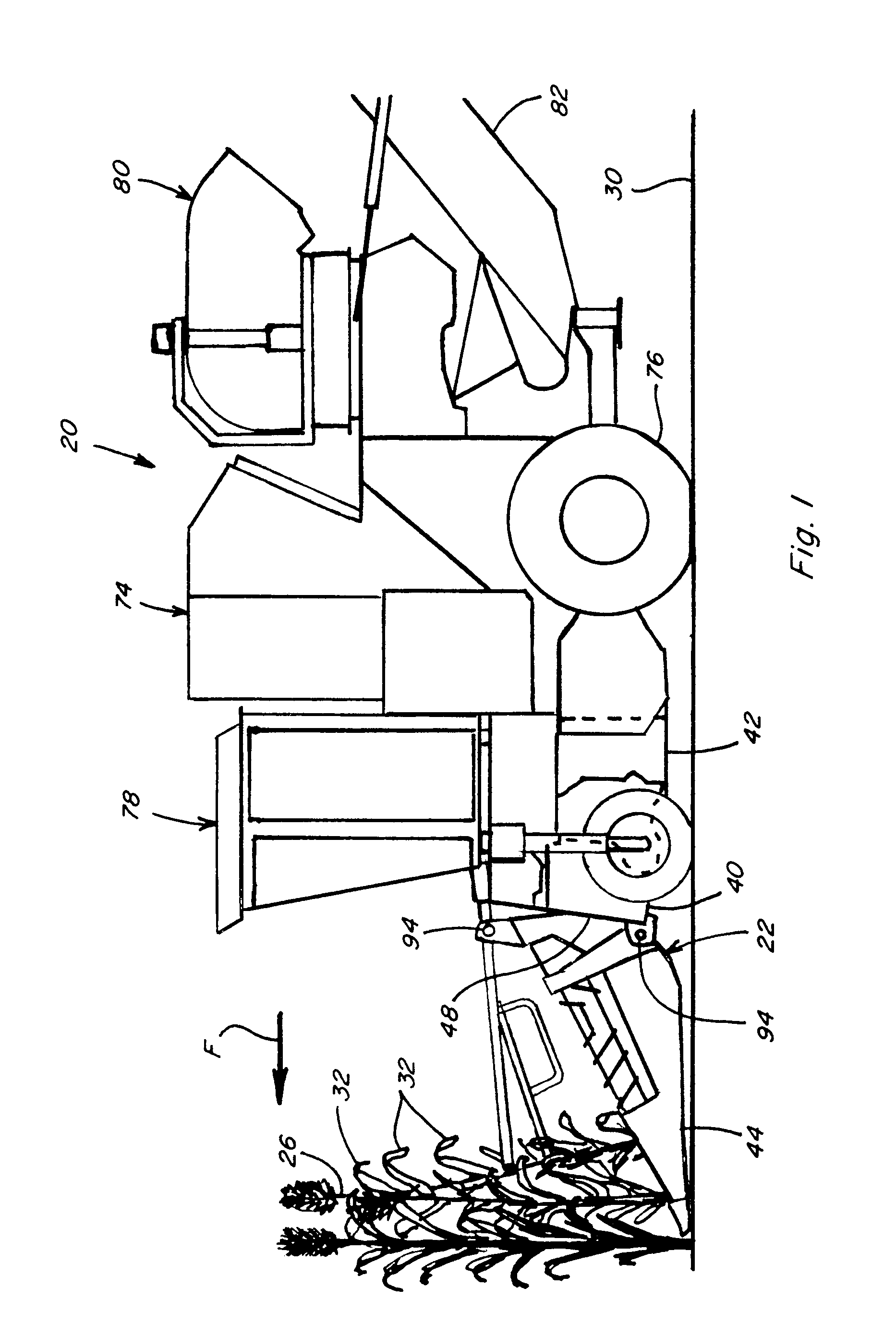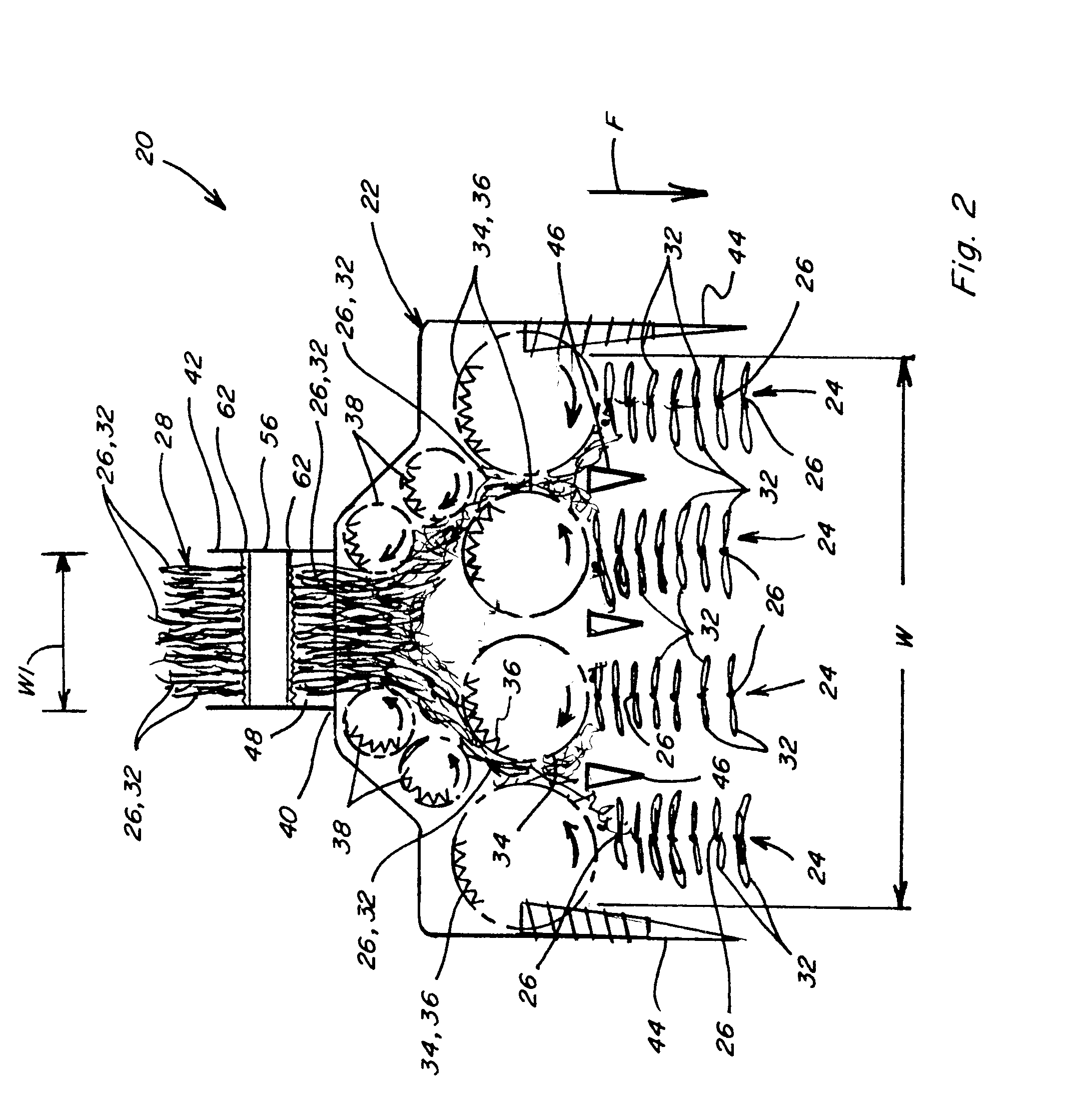Row insensitive biomass harvesting and billeting system and method
a biomass and insensitive technology, applied in the field of system and method for harvesting and billeting plants, can solve the problems of undesired heat generation of sorghum in small chips, unsatisfactory amount of juice containing sugar, and loss of juice,
- Summary
- Abstract
- Description
- Claims
- Application Information
AI Technical Summary
Benefits of technology
Problems solved by technology
Method used
Image
Examples
Embodiment Construction
[0032]Referring now to the drawings, in FIG. 1 a harvester 20 incorporating apparatus and a harvesting system of the invention that provides the annual duty cycle and billeting capabilities of a sugarcane harvester in combination with a row insensitive plant cutting and gathering capability, suitable for harvesting tall, stalky plants such as sweet sorghum and the like, is shown.
[0033]Referring also to FIGS. 2 through 4, a header 22 of harvester 20 is illustrated simultaneously cutting multiple rows 24 or random stands of upstanding, tall stalks 26 of plants across a width W of header 22, close to a ground surface 30 as harvester 20 moves in a forward direction F over the ground. Header 22 is configured such that as stalks 26 are cut, they are automatically laid down in overlapping or overlaying relation, on header 22 with their foliage 32 (leaves, pods, heads, etc.), still largely intact and attached to the cut stalks, forming a rearward flow 28 of the overlapping cut stalks 26. He...
PUM
 Login to View More
Login to View More Abstract
Description
Claims
Application Information
 Login to View More
Login to View More - R&D
- Intellectual Property
- Life Sciences
- Materials
- Tech Scout
- Unparalleled Data Quality
- Higher Quality Content
- 60% Fewer Hallucinations
Browse by: Latest US Patents, China's latest patents, Technical Efficacy Thesaurus, Application Domain, Technology Topic, Popular Technical Reports.
© 2025 PatSnap. All rights reserved.Legal|Privacy policy|Modern Slavery Act Transparency Statement|Sitemap|About US| Contact US: help@patsnap.com



